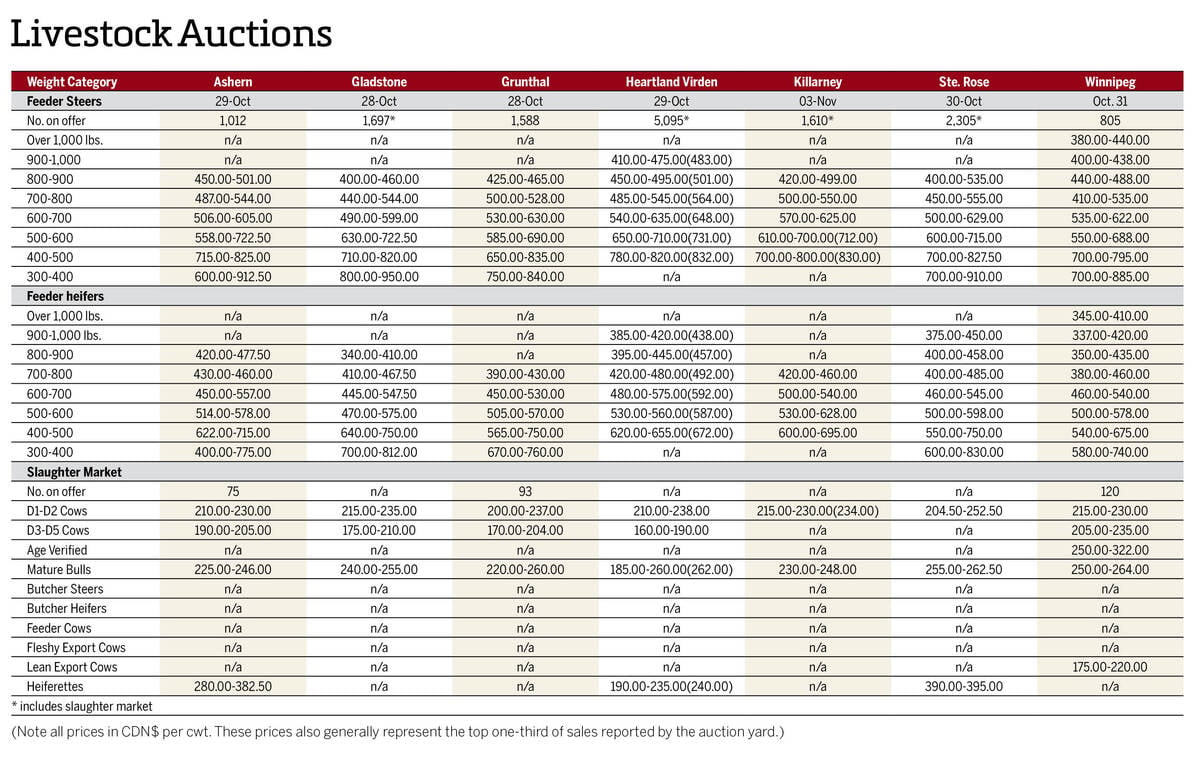The ICE Futures canola market finally ran into resistance after climbing off contract lows for three straight weeks. As harvest wraps up and attention shifts to outside influences, the market may be due for a period of consolidation.
Economic stimulus measures announced by China in September contributed to the recent strength in canola, with a reversal of market sentiment now weighing on financial markets. Crude oil has also backed away after its own recent strength and broader global market factors are taking the top off the canola market.
The upward momentum could easily resume in canola, but there may be some hesitation if Asian markets remain under pressure.
Read Also

Manitoba cattle prices, Nov. 4
Manitoba cattle sale prices for the week of Oct. 28 to Nov. 4, 2025.
From a chart standpoint, $600 appears to be the floor for now. Any moves toward that level will likely bring speculative buying interest and end user demand.
However, the upside may also be limited, as selling generally picks up on the moves higher. Nearby resistance comes in at $630 per tonne. A break above that point could set the stage for a re-test of the summer highs around $680 per tonne.
Basis levels are another pricing signal to watch. Tightening basis levels signal demand, while a widening basis implies any rallies will be short lived.
At two months into the 2024/25 marketing year, export demand for canola is solid. Total canola exports through Oct. 6 of 1.95 million tonnes were up by 167 per cent compared to the same point in the previous year. China has been the major buyer, although its anti-dumping investigation into Canadian canola could quickly change that narrative.
Domestic disappearance also remains strong, hitting 1.93 million tonnes though nine weeks of the crop year. That’s running about 300,000 tonnes ahead of the year ago pace.
Crush margins were sitting at about $136 per tonne above the futures as of Oct. 10, an improvement of $10 over the past month but still off levels nearing $200 per tonne at the same time a year ago.
The Canadian dollar has lost nearly two cents relative to its United States counterpart since the beginning of October. That softer currency is supportive for crush margins and should also make exports more attractive for international buyers.















